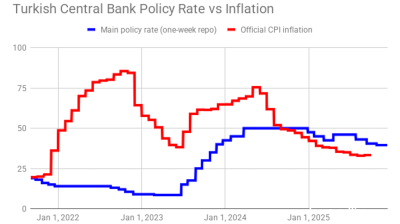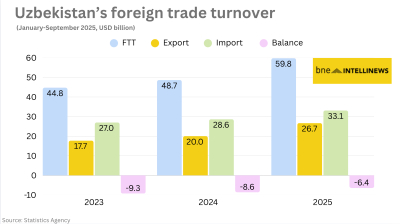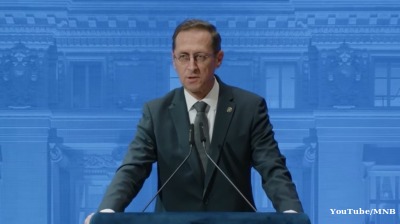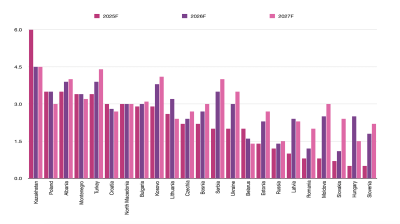Growth in lending slowed in the retail and corporate sectors in Q2 as high borrowing costs continued to weigh, while state-subsidised loans have accounted for nearly half of all new corporate loans, according to the latest lending survey by the Hungarian National Bank (MNB) released on September 6. Among other highlights in the report, the MNB noted a surge in unsecured mortgage loans driven by arbitrage, as households took advantage of high government bond yields.
Evaluating the report, MNB director Balint Dancsi said that lending dynamics are clearly slowing down in Hungary in line with international trends.
Corporate lending increased by 1.3%, or HUF158bn (€408mn), primarily due to the growth in foreign currency loans (+HUF228bn), while forint loans decreased (-HUF70bn). The rise in corporate Fx loans pose little risks as predominantly large companies with revenues in foreign-currency took advantage of lower rates.
The annual growth of corporate loans was 11%, but after filtering out large transactions in the energy industry, it was only 6.4%.
The corporate loan-to-GDP ratio reached 17.5%, which is less than half of the EU average.
Companies borrowed around HUF1 trillion in each of the first two quarters, of which the state subsidised Baross Gabor
The proportion of state subsidised loans was 46% and 56% for SMEs.
SMEs lending reached HUF499bn in Q2, picking up from HUF400bn in Q1.
The stock of retail loans increased by HUF98bn, or 1.3% in Q2, but the retail debt/GDP ratio stands only just 14%, below the Eurozone average of 48%, and 25-45% in V4 countries.
New mortgage loan outlays plummeted 67% y/y in Q2 as market-based loans exceeded 10% at some points, while rates are now retreating as the MNB is lowering the rates amid falling inflationary environment.
Home loan outlays for the purchase of new residential property plunged 89% y/y, and new lending contracts for renovation dropped 73% during the period.
The share of subsidised mortgage lending accounted for half of new loan disbursements at the end of 2022, over 50%.
The government phased out the subsidised mortgage loan (csok) for inhabitants of over 5,000 as of 2024 and narrowed eligibility of popular the zero-interest, general-purpose prenatal baby support loan, the main pillars of the market. The housing market could see a pick-up in H2 as households race with time to take advantage of the support schemes before they mature at the end of 2023.
Some seven out of ten banks surveyed by the MNB anticipate an increase in demand for mortgage loans in H2 as borrowing costs ease.
Data

Turkey's central bank remains cautious, delivers 100bp rate cut
Decision comes on eve of next hearing in trial that could dislodge leadership of opposition CHP party.

Polish retail sales return to solid growth in September
Polish retail sales grew 6.4% year on year in constant prices in September, picking up from a 3.1% y/y rise in August, the statistics office GUS said.

Uzbekistan’s nine-month foreign trade nears $60bn
Export growth of 33% and import expansion of 16% y/y produce $6.4bn deficit.

Hungary’s central bank leaves rates unchanged
National Bank of Hungary expects inflation to fall back into the tolerance band by early 2026, with the 3% target sustainably achievable in early 2027 under the current strict policy settings.




